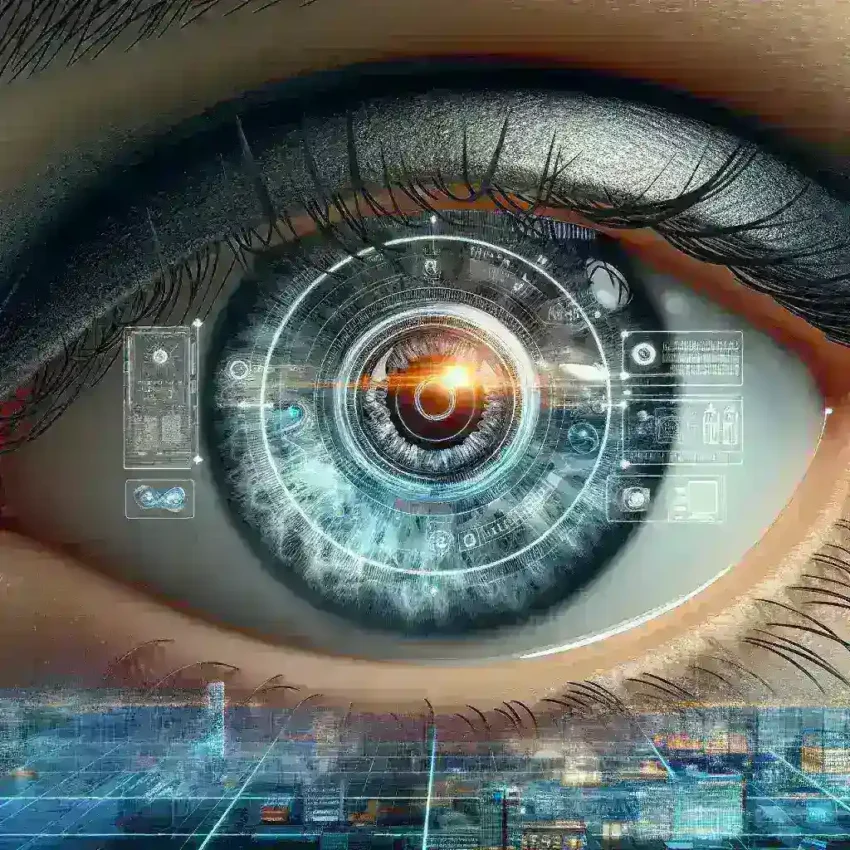Introduction
In a world increasingly dominated by technology, the intersection of vision correction and augmented reality has given rise to a groundbreaking innovation: smart contact lenses. These cutting-edge lenses not only enhance vision but also introduce augmented reality (AR) capabilities directly into our field of view. This article delves into the fascinating world of smart contact lenses, exploring their development, functionality, benefits, challenges, and future prospects.
The Evolution of Vision Correction
Vision correction has come a long way since the invention of eyeglasses in the 13th century. As our understanding of optics improved, so did the methods we used to correct vision. The introduction of contact lenses in the mid-20th century was a significant leap forward, providing a more convenient alternative to glasses. However, traditional contact lenses have limitations, such as comfort, vision quality, and the inability to integrate technology.
The Birth of Smart Contact Lenses
Smart contact lenses represent the next evolutionary step in vision correction. The concept was born from the desire to merge the physical world with digital information seamlessly. Research and development groups worldwide have been working on incorporating sensors, microelectronics, and AR technology into contact lenses, ultimately leading to prototypes that not only correct vision but also overlay virtual content onto the wearer’s view.
How Smart Contact Lenses Work
Smart contact lenses operate by using embedded technology that interacts with the user’s environment. Here’s a detailed look at how they function:
- Embedded Sensors: These sensors can detect light levels, eye movement, and other environmental factors, enabling the lenses to adjust information displayed based on the wearer’s needs.
- Connectivity: Through wireless technologies like Bluetooth, smart contact lenses can communicate with smartphones or other devices, allowing users to access notifications, navigation, and more right in their line of sight.
- Augmented Reality Integration: By projecting digital images or information onto the lenses, users can experience AR applications that enhance their daily activities, from gaming to navigation, without the need for additional screens.
Benefits of Smart Contact Lenses
The potential advantages of smart contact lenses extend beyond mere vision correction:
- Enhanced Vision: Smart lenses can improve visual acuity by adjusting to varying light conditions and providing clearer images.
- Convenience: Users can access real-time information without the distraction of looking at their phones or other devices.
- Health Monitoring: Some prototypes are designed to monitor health metrics, such as glucose levels for diabetic patients, making them an invaluable tool for medical management.
- Improved User Experience: The integration of AR can create immersive experiences, enhancing gaming, navigation, and everyday tasks.
Challenges and Limitations
Despite their exciting potential, smart contact lenses face several challenges:
- Technology Hurdles: Miniaturizing technology to fit into a contact lens while maintaining comfort and usability is a significant engineering challenge.
- Regulatory Concerns: As with any medical device, smart contact lenses will require rigorous testing and approval from regulatory bodies, which can slow down development.
- Data Privacy: The collection of personal data through smart lenses raises concerns about privacy and security, necessitating robust protections.
- User Acceptance: Potential users must be educated on the benefits and functionalities to overcome skepticism about new technologies.
Real-World Applications
Several companies and research institutions are currently developing smart contact lenses:
- Mojo Vision: Mojo Vision has been working on smart contact lenses that feature a microLED display capable of overlaying information directly into the user’s field of vision.
- Google’s Project Iris: Google is exploring the potential of smart contact lenses that could provide AR experiences for various applications, from navigation to social media.
- University Research: Numerous academic institutions are researching smart lenses capable of monitoring health metrics and enhancing vision simultaneously.
The Future of Vision Correction
The future of smart contact lenses looks promising. As technology advances, we can expect to see:
- Broader Adoption: As costs decrease and technology improves, more individuals may embrace smart contact lenses as a viable alternative to traditional vision correction methods.
- Integration with Other Technologies: Future lenses could integrate seamlessly with other wearable technologies, enhancing user experience across all devices.
- Personalized Vision Correction: Advancements in artificial intelligence could allow smart lenses to tailor vision correction and AR experiences to individual needs.
- Healthcare Revolution: Smart lenses could transform healthcare monitoring, providing real-time data to both users and healthcare professionals.
Conclusion
Smart contact lenses are set to revolutionize the way we think about vision correction. By merging augmented reality with everyday life, these lenses have the potential to enhance not only how we see the world but also how we interact with it. As development continues and challenges are addressed, the future of smart contact lenses looks bright, promising a new era of convenience, connectivity, and enhanced vision.

